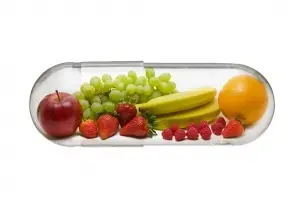
The palate of a toddler is a blank white sheet and it is only up to the parents what gets on it. Products that are healthy and rich in vitamins will undoubtedly have a positive effect on the baby’s health and development. Proper nutrition always brings benefits. A proper diet will provide your toddler with energy for the whole day of playing or learning and will allow him to discover the world undisturbed by illnesses. Why is it worth eating foods rich in vitamins, in what products can we find them and what are vitamins?
Vitamins are organic compounds found in small amounts in food, but very necessary for the body to function properly. Lack of vitamins brings only harm, while their excess does not bring benefits, and can make life very difficult. Individual vitamins affect the child’s health and determine the course of many processes occurring in the young body. They are responsible for the structure and functioning of bones, vitamin D), the work of the nervous system (vitamins from group B), help in hematopoietic processes (folic acid and vitamins from group B), affect the condition of the skin and good eyesight (vitamins A and E), allow blood coagulation blood (vitamin K), improve our immunity (vitamin D and C).
Where can we find most of the vitamins our children need? Just look around, if we have a garden, the matter is very simple, if we do not choose shops where we can buy fresh vegetables and fruits and natural juices. A winter alternative to shelves full of vitamin delicacies are preserves, the process of which does not destroy vitamins. Freezing is also perfect, vitamins are doing well then and do not lose their properties. If you do not make winter supplies yourself, pay attention to the labels of purchased juices, jams or purees so that they do not contain preservatives or dyes.
Where can we find the most necessary set of vitamins for our children? Here is a detailed list:
- Vitamin A – is nothing but carotene and retinol, found in dairy products, butter, eggs, fish, red pepper, chives, spinach, kohlrabi, lettuce, carrots, parsley and botwina.
- Vitamin D — found in cod liver oil, butter, cream, sea fish, eggs and liver.
- Vitamin E – is primarily green vegetables, cereal sprouts, meat and butter, nuts, almonds, tomatoes, currants, apricots, peaches.
- Vitamin K – found in cauliflower, cabbage, potatoes, strawberries, lettuce, tomatoes and spinach.
All these vitamins are fat soluble.
- B vitamins – a wide group of vitamins contained in meat, flour, groats, yeast, milk, fish, eggs, cheese, beans, peas, cabbage, potatoes and carrots.
- Vitamin C – is contained primarily in vegetables and fruits such as red pepper, Brussels sprouts, spinach, cabbage, citrus fruits, chokeberry, wild rose, currants, strawberries, raspberries, blueberries, kohlrabi.
In the daily supply of vitamins to the child’s body, it is not the quantity that counts, more in this case does not mean better, but quality. Vitamins are found in almost everything your child eats or may start eating. The choice is very wide.









